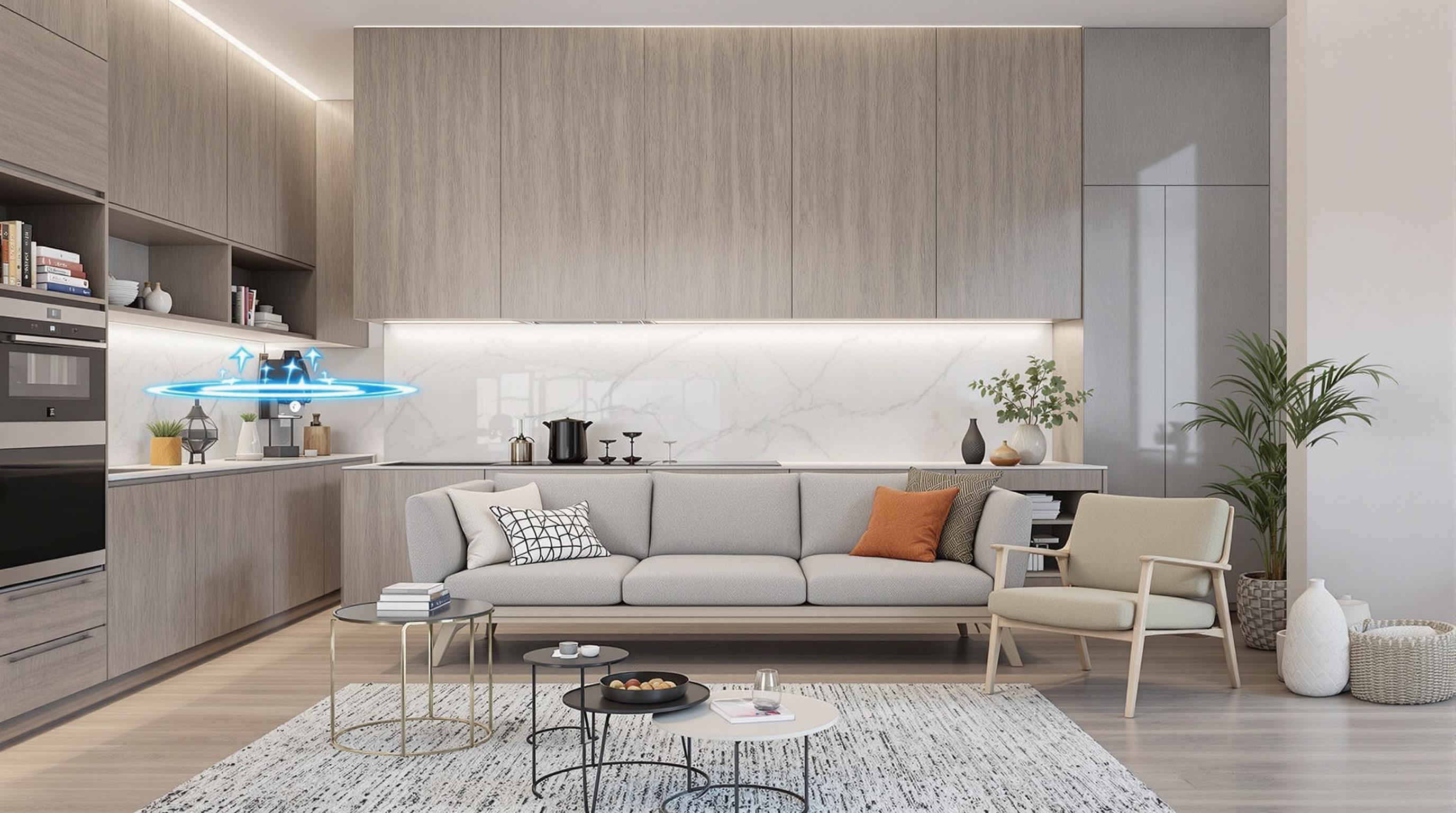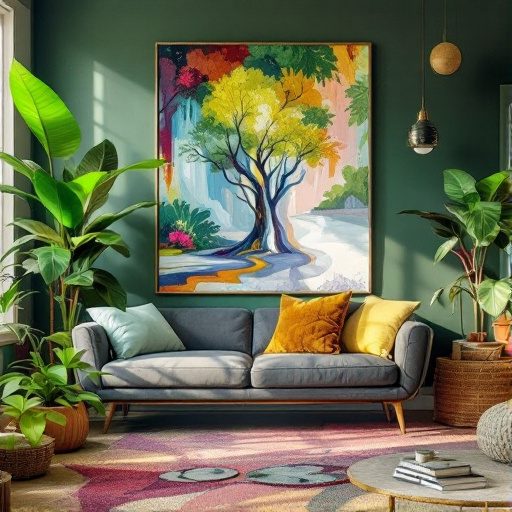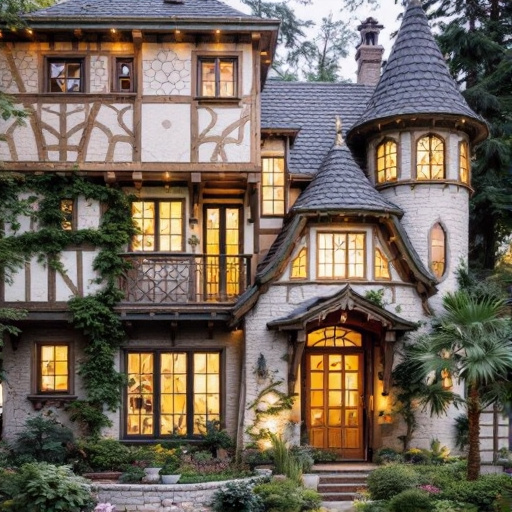Featured Articles
- "Decoding the Mystery: How Folklore Influences Modern Home Designs in Unexpected Ways"
- Reimagining Ruins: How Abandoned Spaces Are Inspiring Modern Home Designs and Eco-Conscious Living
- Reimagining Spaces: How Biophilic Design Can Transform Mental Health in Your Home
- Reviving the Past: How Retro Futurism is Reshaping Modern Home Design with a Twist of Nostalgia
- Revolutionizing Spaces: How Biophilic Design is Transforming Urban Home Environments into Nature-Infused Sanctuaries
Reviving the Past: How Retro Futurism is Reshaping Modern Home Design with a Twist of Nostalgia
Reviving the Past: How Retro Futurism is Reshaping Modern Home Design with a Twist of Nostalgia
Reviving retro futurism is more than just a design trend; it's a cultural journey that intertwines nostalgia with innovation, ultimately reshaping modern home aesthetics. This article explores the resurgence of retro futurism, discussing its roots, contemporary interpretations, and how it melds the old with the new in home design.
The Allure of the Past: A Brief History of Futurism
Retro futurism has its origins in the early to mid-20th century, a time when people were both enamored by technological advancements and influenced by their perceptions of the future. Envisioned through the lens of the 1950s and 60s, these designs often featured streamlined shapes, vibrant colors, and whimsical forms. It's fascinating to note that during this era, futurists thought that by the year 2000, we would be living in flying cars surrounded by robots. While we haven’t quite gotten there yet, the nostalgia associated with those visions persistently resurfaces in our culture.
Nostalgia and Emotional Connection
Have you ever walked into a room and felt an overwhelming wave of nostalgia wash over you? Studies suggest that nostalgia can provide us with a sense of comfort, belonging, and identity (Wildschut et al., 2006). Today’s homeowners are increasingly drawn to designs that evoke happy memories from their childhood—think bright appliances reminiscent of a mid-century kitchen or a wallpaper pattern that could have graced your grandmother’s living room. This emotional connection to home spaces not only enhances comfort but also creates a sense of stability in an ever-changing world.
Design Elements that Define Retro Futurism
What are some quintessential elements of retro futurism that we see making a comeback today? Curved furniture, vibrant color palettes, and synthetic materials are just a few characteristics. Designers increasingly incorporate these elements into contemporary homes to craft spaces that are both nostalgic and modern. For instance, a living room that features a sleek, futuristic couch alongside a classic Eames chair can create an enchanting dialogue between past and present.
Statistics that Speak Volumes
Did you know that a recent survey indicated that over 70% of millennials express a desire for vintage home decor? This rising interest in retro styles speaks volumes about the impact of nostalgia in modern design. According to a study by The National Retail Federation, home decor sales reached a staggering $200 billion in 2022, with vintage and retro aesthetics carving out a significant niche. This not only illustrates the financial clout of the trend but also highlights how deeply entrenched these styles have become in consumer preferences.
Case Study: The Retro Futuristic Home of the Future
Let’s take a closer look at a fascinating case study: The Buffet House in San Francisco, designed by architect Michael Arad. Completed in 2021, this residence features retro elements, such as bubble-shaped light fixtures and a sunken living room, combined with modern amenities like energy-efficient technology. The synthesis of retro and modern design exemplifies the essence of retro futurism—a true testament to how the past informs the present.
Playful Designs with a Touch of Humor
One can't help but chuckle at how retro futurism creates designs that appear almost comically exaggerated. A popular trend involves the use of kitschy motifs, such as 60s-style space-age elements—complete with metallics and psychedelic patterns. Imagine hosting a dinner party where your guests are seated at a table adorned with vibrant green placemats that look straight out of a cartoon! It’s fun to think about how designs can evoke joy and playful conversations among friends and family.
Inclusivity Meets Innovation
Interestingly, retro futurism isn't just a playground for the wealthy; diverse creators are pushing boundaries to make this aesthetic accessible to everyone. Projects like "The Neighborhood Collective" in Detroit emphasize locally sourced materials and community-driven designs. Retro elements—like upcycled furniture—are finding their way into the homes of people from different socio-economic backgrounds, proving that nostalgia can unite us all. This democratization of style is a refreshing take in today’s sometimes exclusive design market.
Building the Future: Sustainability and Retro Aesthetics
As we navigate the complexities of climate change, the idea of blending sustainability with the charming aesthetics of retro futurism comes into play. Designers are increasingly focused on eco-friendly materials that evoke the vibes of the past while looking toward the future. Bamboo furniture that mirrors 1960s designs or organic cotton textiles in bright, nostalgic prints are just a few examples of how to live retro while being kind to our planet.
A Modern Twist on Vintage Trends
Incorporating retro futurism into home design doesn’t mean you have to live in a time capsule. Modern interpretations often reflect a minimalist approach, combining retro pieces with contemporary design for a balanced look. Think of an all-white kitchen featuring a vintage gold refrigerator or a sleek glass coffee table paired with quirky, colorful chairs. The possibilities are limitless, and creating unique spaces is what makes this trend so enchanting.
Community and Culture: The Role of Social Media
It's crucial to recognize how social media platforms have propelled the retro futurism trend into the limelight. Platforms like Instagram and Pinterest serve as visual playgrounds where designers and homeowners showcase their work, allowing for collaboration and inspiration from a global audience. According to a survey by Sprout Social, 86% of users have sought out a product after seeing it on social media. This trend has given rise to hashtags like #RetroFuturism and #VintageVibes, joining a vibrant community of enthusiasts celebrating their shared passions.
A Journey of Discovery
Engaging with retro futurism is a journey—one where each room tells a story. For anyone looking to refresh their space, consider visiting vintage shops or flea markets. You may stumble upon a precious knick-knack or art piece that perfectly aligns with your vision of the past. For instance, a vintage globe can serve as both decor and conversation starter, allowing for delightful exchanges about the way our world has changed over decades. Every object you collect becomes a piece of your own narrative, a link to the past while creating a unique present.
Conclusion: A Harmonious Blend of Eras
Embracing retro futurism in modern home design isn’t merely a return to the past; it’s a harmonious blend of eras that reflects our collective yearning for connection, nostalgia, and innovation. As we move forward, there’s an undeniable charm in looking back, and incorporating vintage aesthetics into our spaces offers a celebration of history—shaping the future one home at a time. Whether you're a teenager looking to create your bedroom sanctuary or a retiree wanting to infuse your living room with a splash of history, retro futurism provides the perfect template for a delightful fusion of past and present.




